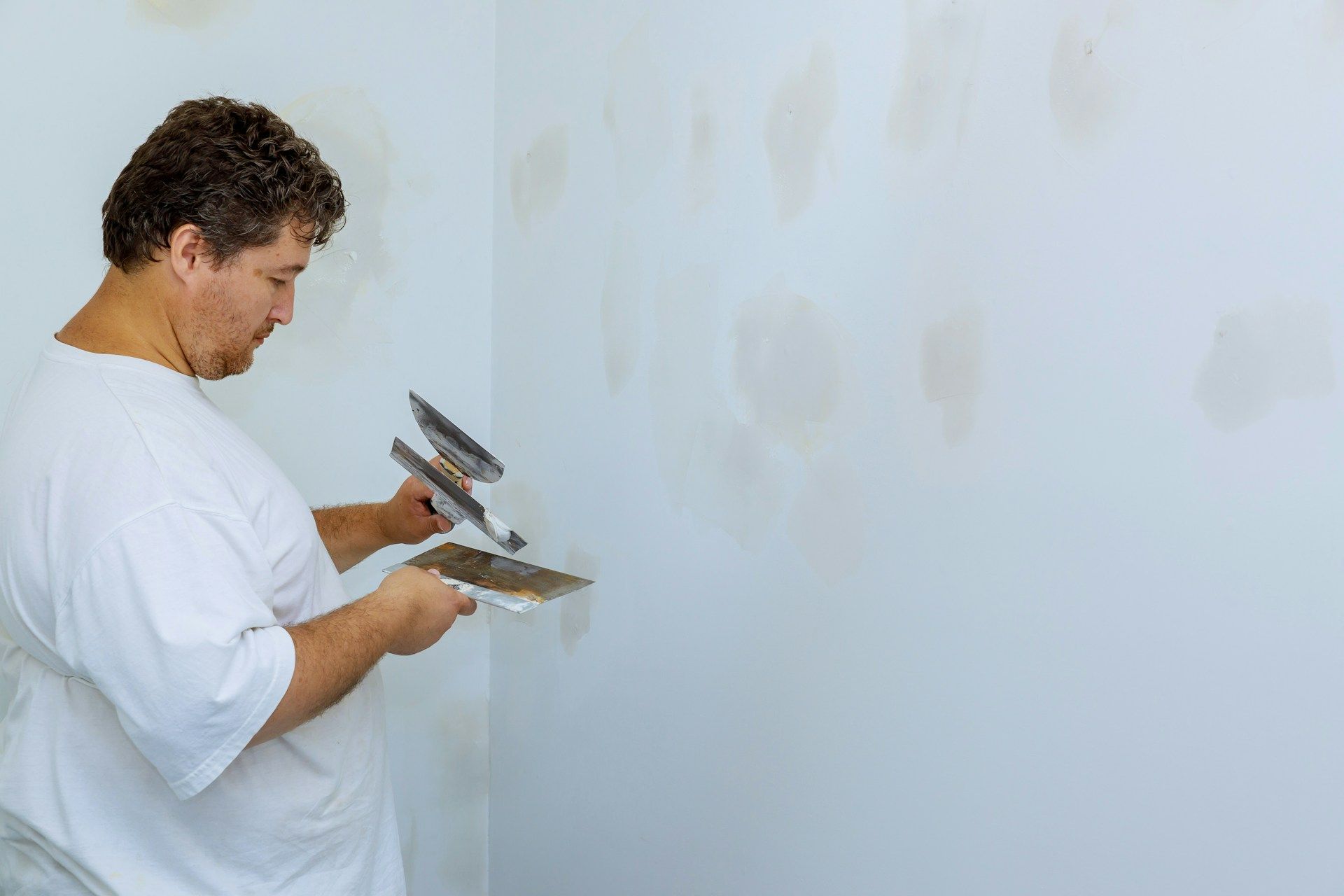How to Prepare Your Home for the Spring: What Maintenance Should You Do?

As winter ends and warmer weather approaches, it’s a great time to give your home a thorough inspection from top to bottom. After all, months of colder weather and exposure to the elements can leave your property—from the HVAC system to the plumbing, patios to fences—in need of some attention and maintenance.
Different areas of your home need special attention in the springtime, and it can be a challenge for most homeowners to complete everything on their to-do list or pre-listing inspection in Chesapeake, MD. In fact, many homeowners aren’t even sure where to start.
If you’re looking to get ready for the season ahead, read on for some spring tips for homeowners on how to prepare your property.
Exterior Home Spring Maintenance Checklist
Before spring arrives, walk around your home’s exterior and look for any areas of damage. Remember that winter weather can take a toll on every part of your home, from the foundation to walls, siding and more. Be thorough in your inspection, and take the time to look for minor problems that could signal much better issues later down the line.
- Lawn. Before spring arrives, rake up any branches, debris, and leaves you might have missed during your fall cleanup—any leftover debris can suffocate your grass as it tries to grow in spring. You should also consider applying a pre-emergent to your lawn. Winter weather can alter your soil’s PH, leaving your lawn vulnerable to weed growth. Pre-emergents kill weeds before they can take root, ensuring your lawn is primed for dense, healthy growth when warm temperatures arrive.
- Decks and Patios. If you have any outdoor features like a deck and patio, spend some time sprucing them up before spring and summer. For wood decks, check and replace any loose or split boards. Give the wood deck a new coat of stain and re-seal it if it’s looking faded or worn. For composite decks, a thorough cleaning with a hose or light pressure washer is all it takes. If you have a brick, concrete, or paver patio, give it a cleaning, too, and remove any rust stains with a high-quality rust removal product.
- Fences. Get your fence back to its original condition this spring by removing any overhanging limbs or branches and grooming nearby shrubs and plants. Physically inspect every post and perform a thorough cleaning of both the posts and rails. If you have a wood fence, determine whether it’s time for re-staining and re-sealing to protect the wood to extend your fence’s lifespan.
Interior Home Spring Maintenance Checklist
Winter’s bane doesn’t just take a toll on your home’s exterior—it also pushes your interior systems to their limits. As you get your home ready for spring, be sure to pay close attention to HVAC, plumbing and air handling systems. As you compile your spring home checklist for interior chores, make sure all of these tasks are on it:
- Service Your HVAC System. Just like you prepared your furnace for colder temperatures last fall, inspect your HVAC system and have it serviced by a professional this spring. Your maintenance technician will check for leaks in any hose connections and ensure proper drainage from the system’s drain pans, among other tasks. Making a small investment in routine spring HVAC maintenance will help save you money on energy costs and ensure your home stays comfortable throughout the warmer months.
- Replace Air Filters. Replacing your air filters regularly can improve indoor air quality and help your HVAC system run more efficiently. Check your filters and replace them if they're dirty or clogged. If you’re investing in spring HVAC maintenance, your HVAC technician will replace these filters for you with the appropriate model. Remember, you’ll want to replace them every couple of months—or more frequently as you run your HVAC system in the coming summer months.
- Inspect Your Attic. Critters often colonize in attics to weather the winter, so don’t forget that inspecting your attic is an important part of your spring home checklist. Look for any signs showing that insects or critters have moved in and hire a pest control specialist if you see any indications of an active infestation. Most importantly, you need to inspect for termites. Grab a flashlight and shine it on all exposed framing. If you spot any tunneling in the wood, call a termite control company immediately to diagnose and treat the problem.
- Inspect Your Basement. After you’ve inspected your attic, it’s time to head below ground and give your basement (if you have one) a thorough checkup. A Next Level Home Inspection includes a comprehensive basement inspection, and we’ll determine whether dampness or humidity is a concern—then, suggest steps to remediate it. A basement inspection also includes checking the base of poured concrete walls. Since cracks start from the bottom up, checking the walls is a good way to determine whether there’s any water penetration into your basement.
- Check for Water Damage (or Mold). When inspecting basements and attics, look closely for evidence of water intrusion, including mold. If you see any gray or black blotches that look like staining, you have a problem on your hands. Your Next Level Home Inspection will include a check for mold and we’ll direct you to a mold remediation specialist when necessary. Be proactive so you can prevent a mold problem from forming in the warmer months of spring and summer!
- Test Your Smoke and Carbon Monoxide Detectors. Checking your smoke and carbon monoxide detectors is of the most critical spring tips for homeowners and is intended to keep your family safe. Make sure your smoke and carbon monoxide detectors are working properly by testing them and replacing batteries if necessary. Next Level Home Inspections can test these for you if they are in high areas of the home and you don’t have a tall enough ladder to reach them.
Cleaning and Organization Spring Home Maintenance Checklist
Spring is a great time for general cleaning, decluttering, and organizing your home. Here are a few spring cleaning tips to get your home fresh and ready for the season of rebirth:
- Downsize and Discard. Start by going through your closets, drawers and cabinets, and donating or discarding anything you no longer need or use. Basements and attics are also candidates, as well as garages. A good rule of thumb is that if you haven’t used it in the last 6-12 months, you probably don’t need it anymore.
- Vacuum Thoroughly. Vacuum any carpet or upholstery and consider renting a carpet cleaner to cut through problem stains. Before you vacuum, sprinkle baking soda over your carpet—it’s a natural deodorizer that will help your rooms smell and feel fresher. Simply apply a generous layer of baking soda over your carpet, let it soak up odors for at least 30 minutes, then vacuum it up.
- Dust Off and Detail. You should also spend some time dusting around the house. Make sure to “detail dust,” wiping down areas that don’t usually get attention, like chair rails, window casings, ceiling fans, and the tops of wall-mounted cabinets. Anything you can do to remove dust, mites, and other allergens will improve your indoor air quality and make your home feel cleaner and healthier.
Schedule a home inspection to get ready for spring (and summer)
Spring is the best time of year to focus your efforts on maintaining and improving your home. Need help checking off the mountain of items on your spring home checklist? Reach out to the home inspection experts at Next Level Home Inspection. We’ll check your property from top to bottom, to ensure your home is fully ready for the warm-weather months ahead.
Next Level Home Inspections is a family owned and operated business capable of providing full home inspections in Maryland that include radon and water testing as well as drone and thermal imaging.
NAVIGATION
Next Level Home Inspections is a family owned and operated business capable of providing full home inspections in Maryland that include radon and water testing as well as drone and thermal imaging.
NAVIGATION
LOCATION










